Effect of Municipal Solid Waste Incineration Fly Ash on the Mechanical Properties and Microstructure of Geopolymer Concrete
Abstract
:1. Introduction
2. Experimental Investigation
2.1. Materials
2.2. Mix Proportions
2.3. Basic Mechanical Properties Tests
2.4. Fracture Properties Test
2.5. Microscopic Test
2.6. Toxic Leaching Test
3. Results and Discussion
3.1. Compressive Strength
3.2. Splitting Tensile Strength
3.3. Elastic Modulus
3.4. Fracture Properties
3.5. Microanalysis of MFA-GPC
3.5.1. SEM Analysis
3.5.2. XRD Analysis
3.5.3. FTIR Analysis
3.5.4. Toxic Leaching Analysis
4. Conclusions
- (1)
- The basic mechanical properties of MFA-GPC show a linear downward trend with the continuous increase of MFA replacement ratios. When the MFA replacement rate reaches 40%, the cubic compressive strength, splitting tensile strength, axial compressive strength and elastic modulus decrease to 83%, 81%, 78%, and 93%, respectively compared with the reference group.
- (2)
- The fracture properties of MFA-GPC gradually decrease with the increase of MFA replacement ratios. When the MFA replacement rate reaches 40%, the peak load, initiation fracture toughness, unstable fracture toughness and fracture energy are reduced by 83%, 77%, 73% and 61%, respectively, compared with the reference group.
- (3)
- The microstructure of MFA-GPC becomes porous and loose with the addition of MFA. With the increase of MFA substitution ratios, voids and cracks in the matrix structure further increase, which explains the difference of mechanical properties between MFA-GPC and GPC. XRD and FTIR results indicate that the main hydration products of MFA-GPC are amorphous aluminosilicate minerals gels. However, the aluminum silicate gel products in MFA-GPC gradually decrease, and the degree of carbonization gradually increases.
- (4)
- The leaching results of heavy metals from MFA-GPC show that the leaching content of each heavy metal in MFA-GPC is low compared with the standard limit, which indicates that MFA-GPC has an excellent fixation effect on heavy metals in MFA, and heavy metals are immobilized through physical immobilization and chemical bonding.
- (5)
- In this study, the internal composition of GPC was assumed to be the same as that of OPC concrete, only one type of MFA was utilized and only Chinese specifications were referenced for the toxic leaching test, which brought certain limitations. In the future, the influence of diverse MFA can be studied according to the different internal composition in GPC and OPCC, and the international standards can be further referenced.
Author Contributions
Funding
Institutional Review Board Statement
Informed Consent Statement
Conflicts of Interest
References
- Xie, J.H.; Chen, W.; Wang, J.J.; Fang, C.; Zhang, B.X.; Liu, F. Coupling effects of recycled aggregate and GGBS/metakaolin on physicochemical properties of geopolymer concrete. Constr. Build. Mater. 2019, 226, 345–359. [Google Scholar] [CrossRef]
- Wang, L.; Guo, F.X.; Yang, H.M.; Wang, Y. Comparison of fly ash, PVA fiber, MgO and shrinkage-reducing admixture on the frost resistance of face slab concrete via pore structural and fractal analysis. Fractals 2021, 29, 2140002. [Google Scholar] [CrossRef]
- Kan, L.L.; Zhang, L.; Zhao, Y.J.; Wu, M. Properties of polyvinyl alcohol fiber reinforced fly ash based Engineered Geopolymer Composites with zeolite replacement. Constr. Build. Mater. 2020, 231, 117161. [Google Scholar] [CrossRef]
- Wang, L.; Lu, X.; Liu, L.; Xiao, J.; Zhang, G.; Guo, F.; Li, L. Influence of MgO on the hydration and shrinkage behavior of low heat Portland cement-based materials via pore structural and fractal analysis. Fractal Fract. 2022, 6, 40. [Google Scholar] [CrossRef]
- Zhang, P.; Zhang, H.; Cui, G.; Yue, X.; Guo, J.; Hui, D. Effect of steel fiber on impact resistance and durability of concrete containing nano-SiO2. Nanotechnol. Rev. 2021, 10, 504–517. [Google Scholar] [CrossRef]
- Bouaissi, A.; Li, L.Y.; Abdullah, M.M.A.B.; Bui, Q.B. Mechanical properties and microstructure analysis of FA-GGBS-HMNS based geopolymer concrete. Constr. Build. Mater. 2019, 210, 198–209. [Google Scholar] [CrossRef]
- Wang, L.; Luo, R.; Zhang, W.; Jin, M.; Tang, S. Effects of fineness and content of phosphorus slag on cement hydration, permeability, pore structure and fractal dimension of concrete. Fractals 2021, 29, 2140004. [Google Scholar] [CrossRef]
- Zhang, X.M.; Zhang, P.; Wang, T.Y.; Zheng, Y.; Qiu, L.H.; Sun, S.W. Compressive strength and anti-chloride ion penetration assessment of geopolymer mortar merging PVA fiber and nano-SiO2 using RBF–BP composite neural network. Nanotechnol. Rev. 2022, 11, 1181–1192. [Google Scholar] [CrossRef]
- Golewski, G.L. Green concrete composite incorporating fly ash with high strength and fracture toughness. J. Clean. Prod. 2018, 172, 218–226. [Google Scholar] [CrossRef]
- National Bureau of Statistics of China. Operation of Building Materials Industry in 2021; National Development and Reform Commission: Beijing, China, 2022. [Google Scholar]
- Luhar, S.; Chaudhary, S.; Luhar, I. Development of rubberized geopolymer concrete: Strength and durability studies. Constr. Build. Mater. 2019, 204, 740–753. [Google Scholar] [CrossRef]
- Assi, L.N.; Deaver, E.E.; Ziehl, P. Effect of source and particle size distribution on the mechanical and microstructural properties of fly Ash-Based geopolymer concrete. Constr. Build. Mater. 2018, 167, 372–380. [Google Scholar] [CrossRef]
- Zhang, P.; Kang, L.; Zheng, Y.; Zhang, T.; Zhang, B. Influence of SiO2/Na2O molar ratio on mechanical properties and durability of metakaolin-fly ash blend alkali-activated sustainable mortar incorporating manufactured sand. J. Mater. Res. Technol. 2022, 18, 3553–3563. [Google Scholar] [CrossRef]
- Zhang, N.; Yan, C.Y.; Li, L.; Khan, M. Assessment of fiber factor for the fracture toughness of polyethylene fiber reinforced geopolymer. Constr. Build. Mater. 2022, 319, 126130. [Google Scholar] [CrossRef]
- Liew, Y.M.; Heah, C.Y.; Mohd, M.A.B.; Kamarudin, H. Structure and properties of clay-based geopolymer cements: A review. Prog. Mater. Sci. 2016, 83, 595–629. [Google Scholar] [CrossRef]
- Abadel, A.A.; Albidah, A.S.; Altheeb, A.H.; Alrshoudi, F.A.; Abbas, H.; Salloum, Y.A.A. Effect of molar ratios on strength, microstructure & embodied energy of metakaolin geopolymer. Adv. Concr. Constr. 2021, 11, 127–140. [Google Scholar]
- Gao, Z.; Zhang, P.; Wang, J.; Wang, K.; Zhang, T. Interfacial properties of geopolymer mortar and concrete substrate: Effect of polyvinyl alcohol fiber and nano-SiO2 contents. Constr. Build. Mater. 2022, 315, 125735. [Google Scholar] [CrossRef]
- Jing, Y.; Han, Q.; Zhang, P.; Wu, J.; Zhang, D.; Zhang, T. Comprehensive review of the properties of fly ash-based geopolymer with additive of nano-SiO2. Nanotechnol. Rev. 2022, 11, 1478–1498. [Google Scholar]
- Zhang, P.; Wang, K.; Wang, J.; Guo, J.; Ling, Y. Macroscopic and microscopic analyses on mechanical performance of metakaolin/fly ash based geopolymer mortar. J. Clean. Prod. 2021, 294, 126193. [Google Scholar] [CrossRef]
- Zhang, P.; Wang, K.X.; Wang, J.; Guo, J.J.; Hu, S.W.; Ling, Y.F. Mechanical properties and prediction of fracture parameters of geopolymer/alkali-activated mortar modified with PVA fiber and nano-SiO2. Ceram. Int. 2020, 46, 20027–20037. [Google Scholar] [CrossRef]
- Gao, Z.; Zhang, P.; Guo, J.J.; Wang, K.X. Bonding behavior of concrete matrix and alkali-activated mortar incorporating nano-SiO2 and polyvinyl alcohol fiber: Theoretical analysis and prediction model. Ceram. Int. 2021, 47, 31638–31649. [Google Scholar] [CrossRef]
- Zhang, P.; Han, X.; Zheng, Y.X.; Wan, J.Y.; Hui, D. Effect of PVA fiber on mechanical properties of fly ash-based geopolymer concrete. Rev. Adv. Mater. Sci. 2021, 60, 418–437. [Google Scholar] [CrossRef]
- Wang, K.X.; Zhang, P.; Guo, J.J.; Gao, Z. Single and synergistic enhancement on durability of geopolymer mortar by polyvinyl alcohol fiber and nano-SiO2. J. Mater. Res. Technol. 2021, 15, 1801–1814. [Google Scholar] [CrossRef]
- Huang, X.; Huang, T.; Li, S.; Muhammad, F.; Xu, G.; Zhao, Z.; Yu, L.; Yan, Y.; Li, D.; Jiao, B. Immobilization of chromite ore processing residue with alkali-activated blast furnace slag-based geopolymer. Ceram. Int. 2016, 42, 9538–9549. [Google Scholar] [CrossRef]
- Hassan, A.; Arif, M.; Shariq, M. Use of geopolymer concrete for a cleaner and sustainable environment—A review of mechanical properties and microstructure. J. Clean. Prod. 2019, 223, 704–728. [Google Scholar] [CrossRef]
- Noushini, A.; Aslani, F.; Castel, A.; Gilbert, R.I.; Uy, B.; Foster, S. Compressive stress-strain model for low-calcium fly ash-based geopolymer and heat-cured Portland cement concrete. Cem. Concr. Comp. 2016, 73, 136–146. [Google Scholar] [CrossRef]
- Yan, J.H.; Chen, T.; Li, X.D.; Zhang, J.; Lu, S.Y.; Ni, M.J.; Cen, K.F. Evaluation of PCDD/Fs emission from fluidized bed incinerators co-firing MSW with coal in China. J. Hazard. Mater. 2006, 135, 47–51. [Google Scholar] [CrossRef]
- Ye, N.; Chen, Y.; Yang, J.; Liang, S.; Hu, Y.; Xiao, B.; Huang, Q.; Shi, Y.; Hu, J.; Wu, X. Co-disposal of MSWI fly ash and Bayer red mud using an one-part geopolymeric system. J. Hazard. Mater. 2016, 318, 70–78. [Google Scholar] [CrossRef]
- Girskas, G.; Kizinievič, O.; Kizinievič, V. Analysis of durability (frost resistance) of MSWI fly ash modified cement composites. Arch. Civ. Mech. Eng. 2021, 21, 39. [Google Scholar] [CrossRef]
- Hjelmar, O. Disposal strategies for municipal solid waste incineration residues. J. Hazard. Mater. 1996, 47, 345–368. [Google Scholar] [CrossRef]
- Shi, H.; Kan, L. Leaching behavior of heavy metals from municipal solid wastes incineration (MSWI) fly ash used in concrete. J. Hazard. Mater. 2009, 164, 750–754. [Google Scholar] [CrossRef]
- Tan, W.F.; Lv, J.W.; Deng, Q.W.; Zhang, X.W. Application of a combination of municipal solid waste incineration fly ash and lightweight aggregate in concrete. J. Adhes. Sci. Technol. 2015, 30, 866–877. [Google Scholar] [CrossRef]
- Wang, L.; Zhang, Y.; Chen, L.; Guo, B.; Tan, Y.; Sasaki, K.; Tsang, D.C.W. Designing novel magnesium oxysulfate cement for stabilization/solidification of municipal solid waste incineration fly ash. J. Hazard. Mater. 2022, 423, 127025. [Google Scholar] [CrossRef] [PubMed]
- Li, Z.G.; Kondoa, R.; Ko, I. Development of foamed geopolymer with addition of municipal solid waste incineration fly ash. J. Adv. Concr. Technol. 2021, 19, 830–846. [Google Scholar] [CrossRef]
- Charles, H.K.; Alvin, W.M.; Barford, J.P.; McKay, G. Use of Incineration MSW Ash: A Review. Sustainability 2010, 2, 1943–1968. [Google Scholar]
- Quina, M.J.; Bordado, J.C.; Quinta, F.R.M. Treatment and use of air pollution control residues from MSW incineration: An overview. Waste Manag. 2008, 28, 2097–2121. [Google Scholar] [CrossRef] [Green Version]
- Lee, W.K.; Park, E.Z.; Kim, Y.D.; Son, S.G.; Lee, J.H. Development of Inorganic Binder with MSWI Ash. Mater. Sci. Forum. 2008, 569, 317–320. [Google Scholar] [CrossRef]
- Guo, X.; Shi, H.; Wu, K.; Ju, Z.; Dick, W.A. Performance and risk assessment of alinite cement-based materials from municipal solid waste incineration fly ash (MSWIFA). Mater. Struct. 2015, 49, 2383–2391. [Google Scholar] [CrossRef]
- Nishida, K.; Nagayoshi, Y.; Ota, H.; Nagasawa, H. Melting and stone production using MSW incinerated ash. Waste Manag. 2001, 21, 443–449. [Google Scholar] [CrossRef]
- Mangialardi, T. Sintering of MSW fly ash for reuse as a concrete aggregate. J. Hazard. Mater. 2001, 87, 225–239. [Google Scholar] [CrossRef]
- Sakai, S.; Hiraoka, M. Municipal solid waste incinerator residue recycling by thermal processes. Waste Manag. 2000, 20, 249–258. [Google Scholar] [CrossRef]
- Polettini, A.; Pomi, R.; Trinci, L.; Muntoni, A.; Lo, M.S. Engineering and environmental properties of thermally treated mixtures containing MSWI fly ash and low-cost additives. Chemosphere 2004, 56, 901–910. [Google Scholar] [CrossRef] [PubMed]
- Hong, K.J.; Tokunaga, S.; Ishigami, Y.; Kajiuchi, T. Extraction of heavy metals from MSW incinerator fly ash using saponins. Chemosphere 2000, 41, 345–352. [Google Scholar] [CrossRef]
- Saikia, N.; Kato, S.; Kojima, T. Production of cement clinkers from municipal solid waste incineration (MSWI) fly ash. Waste Manag. 2007, 27, 1178–1189. [Google Scholar] [CrossRef] [PubMed]
- Zheng, L.; Wang, W.; Gao, X. Solidification and immobilization of MSWI fly ash through aluminate geopolymerization: Based on partial charge model analysis. Waste Manag. 2016, 58, 270–279. [Google Scholar] [CrossRef] [PubMed]
- Liu, J.; Hu, L.; Tang, L.; Ren, J. Utilisation of municipal solid waste incinerator (MSWI) fly ash with metakaolin for preparation of alkali-activated cementitious material. J. Hazard. Mater. 2021, 402, 123451. [Google Scholar] [CrossRef]
- Ren, J.; Hu, L.; Dong, Z.; Tang, L.; Xing, F.; Liu, J. Effect of silica fume on the mechanical property and hydration characteristic of alkali-activated municipal solid waste incinerator (MSWI) fly ash. J. Clean. Prod. 2021, 295, 126317. [Google Scholar] [CrossRef]
- Tian, X.; Rao, F.; Leon, P.C.A.; Song, S. Effects of aluminum on the expansion and microstructure of alkali-activated MSWI fly ash-based pastes. Chemosphere 2020, 240, 124986. [Google Scholar] [CrossRef]
- Li, Y.; Min, X.; Ke, Y.; Liu, D.; Tang, C. Preparation of red mud-based geopolymer materials from MSWI fly ash and red mud by mechanical activation. Waste Manag. 2019, 83, 202–208. [Google Scholar] [CrossRef]
- Jin, M.; Zheng, Z.; Sun, Y.; Chen, L.; Jin, Z. Resistance of metakaolin-MSWI fly ash based geopolymer to acid and alkaline environments. J. Non-Cryst. Solids. 2016, 450, 116–122. [Google Scholar] [CrossRef]
- GB 8076-2008; Concrete Admixtures. China Standard Press: Beijing, China, 2008.
- JGJ 55-2011; Specification for Mix Proportion Design of Ordinary Concrete. Ministry of Housing and Urban-Rural Development of the People’s Republic of China: Beijing, China, 2011.
- Jin, M. Immobilization of Heavy Metals in Municipal Solid Waste Incineration (MSWI) Fly Ash with Geopolymer. Ph.D. Thesis, Nanjing University of Science and Technology, Nanjing, China, 2011. [Google Scholar]
- Zhang, Y.; Sun, W.; Sha, J.; Lin, W.; Zheng, K.; Liu, S. Preparation, properties and mechanism of fly ash based geopolymer concrete. J. Build. 2003, 6, 237–242. [Google Scholar]
- GB/T 50081-2019; Standard for Test Methods of Concrete Physical and Mechanical Properties. Ministry of Housing and Urban-Rural Development of the People’s Republic of China: Beijing, China, 2019.
- Zhang, P.; Wang, J.; Li, Q.; Wan, J.; Ling, Y. Mechanical and fracture properties of steel fiber-reinforced geopolymer concrete. Sci. Eng. Compos. Mater. 2021, 28, 299–313. [Google Scholar] [CrossRef]
- Chen, C.; Chen, X.D.; Guo, S.S. Experimental study on acoustic emission characteristic of fatigue crack growth of self-compacting concrete. Struct. Control Health 2019, 26, 101002. [Google Scholar] [CrossRef]
- Fornusek, J.; Tvarog, M. Influence of Casting Direction on Fracture Energy of Fiber-Reinforced Cement Composites. Key Eng. Mater. 2014, 594–595, 444–448. [Google Scholar] [CrossRef]
- DL/T 5332-2005; Norm for Fracture Test of Hydraulic Concrete. China Electric Power Press: Beijing, China, 2005.
- HJ/T 299-2007; Solid Waste-Extraction Procedure for Leaching Toxicity-Sulphuric Acid & Nitric Acid Method. China Environmental Science Press: Beijing, China, 2007.
- GB 5085.3-2007; Identification Standards for Hazardous Wastes—Identification for Extraction Toxicity. State Environmental Protection Administration: Beijing, China, 2007.
- Lenormand, T.; Rozière, E.; Loukili, A.; Staquet, S. Incorporation of treated municipal solid waste incineration electrostatic precipitator fly ash as partial replacement of Portland cement: Effect on early age behaviour and mechanical properties. Constr. Build. Mater. 2015, 96, 256–269. [Google Scholar] [CrossRef]
- Yang, Z.; Ji, R.; Liu, L.; Wang, X.; Zhang, Z. Recycling of municipal solid waste incineration by-product for cement composites preparation. Constr. Build. Mater. 2018, 162, 794–801. [Google Scholar] [CrossRef]
- Jiang, G.; Min, X.; Ke, Y.; Liang, Y.; Yan, X.; Xu, W.; Lin, Z. Solidification/stabilization of highly toxic arsenic-alkali residue by MSWI fly ash-based cementitious material containing Friedel’s salt: Efficiency and mechanism. J. Hazard. Mater. 2022, 425, 127992. [Google Scholar] [CrossRef]
- Rémond, S.; Pimienta, P.; Bentz, D.P. Effects of the incorporation of Municipal Solid Waste Incineration fly ash in cement pastes and mortars. Cem. Concr. Res. 2002, 32, 303–311. [Google Scholar] [CrossRef]
- Singh, D.; Kumar, A. Geo-environmental application of municipal solid waste incinerator ash stabilized with cement. J. Rock. Mech. Geotech. 2017, 9, 370–375. [Google Scholar] [CrossRef]
- Guo, X.; Song, M. Micro-nanostructures of tobermorite hydrothermal-synthesized from fly ash and municipal solid waste incineration fly ash. Constr. Build. Mater. 2018, 191, 431–439. [Google Scholar] [CrossRef]
- Jaarsveld, J.G.S.; Deventer, J.S.J. The effect of metal contaminants on the formation and properties of waste-based. Cem. Concr. Res. 1999, 29, 1189–1200. [Google Scholar] [CrossRef]
- Wang, Q.; Kang, S.; Wu, L.; Tang, N.; Zhang, Q. Molecular simulation of N-A-S-H and C-A-S-H in geopolymer cementitious system. J. Build. Mater. 2020, 23, 184–191. [Google Scholar]
- Yu, H.T.; Liu, W.S.; Beadham, I.; Deng, Y.; Hou, H.B. A study into solidification of municipal solid waste incinerator fly ash in low-clinker slag cementitious materials. Fresen. Environ. Bull. 2013, 22, 2963–2969. [Google Scholar]
- Zhang, W.; Zhang, J.; Ye, J.; Wang, H.; Zhang, J.; Liu, J. Influence of synthesis conditions on morphology of ettringite. J. Chin. Ceram. Soc. 2017, 45, 631–638. [Google Scholar]
- Pasupathy, K.; Berndt, M.; Sanjayan, J.; Rajeev, P.; Cheema, D.S. Durability of low-calcium fly ash based geopolymer concrete culvert in a saline environment. Cem. Concr. Res. 2017, 100, 297–310. [Google Scholar] [CrossRef]
- Xu, J.Z.; Zhou, Y.L.; Tang, R.X. Study on the solidification of heavy metals by fly ash based geopolymers. J. Build. Mater. 2006, 9, 341–346. [Google Scholar]
- Smith, B.C. Infrared Spectral Interpretation: A Systematic Approach; CRC Press: Boca Raton, FL, USA, 2018. [Google Scholar]
- Chindaprasirt, P.; Jaturapitakkul, C.; Chalee, W.; Rattanasak, U. Comparative study on the characteristics of fly ash and bottom ash geopolymers. Waste Manag. 2009, 29, 539–543. [Google Scholar] [CrossRef] [PubMed]
- GB 18598-2019; Standard for Pollution Control on the Hazardous Waste Landfill. International Standards Organization: Beijing, China, 2019.
- GB 16889-2008; Standard for Pollution Control on the Landfill Site of Municipal Solid Waste. International Standards Organization: Beijing, China, 2008.
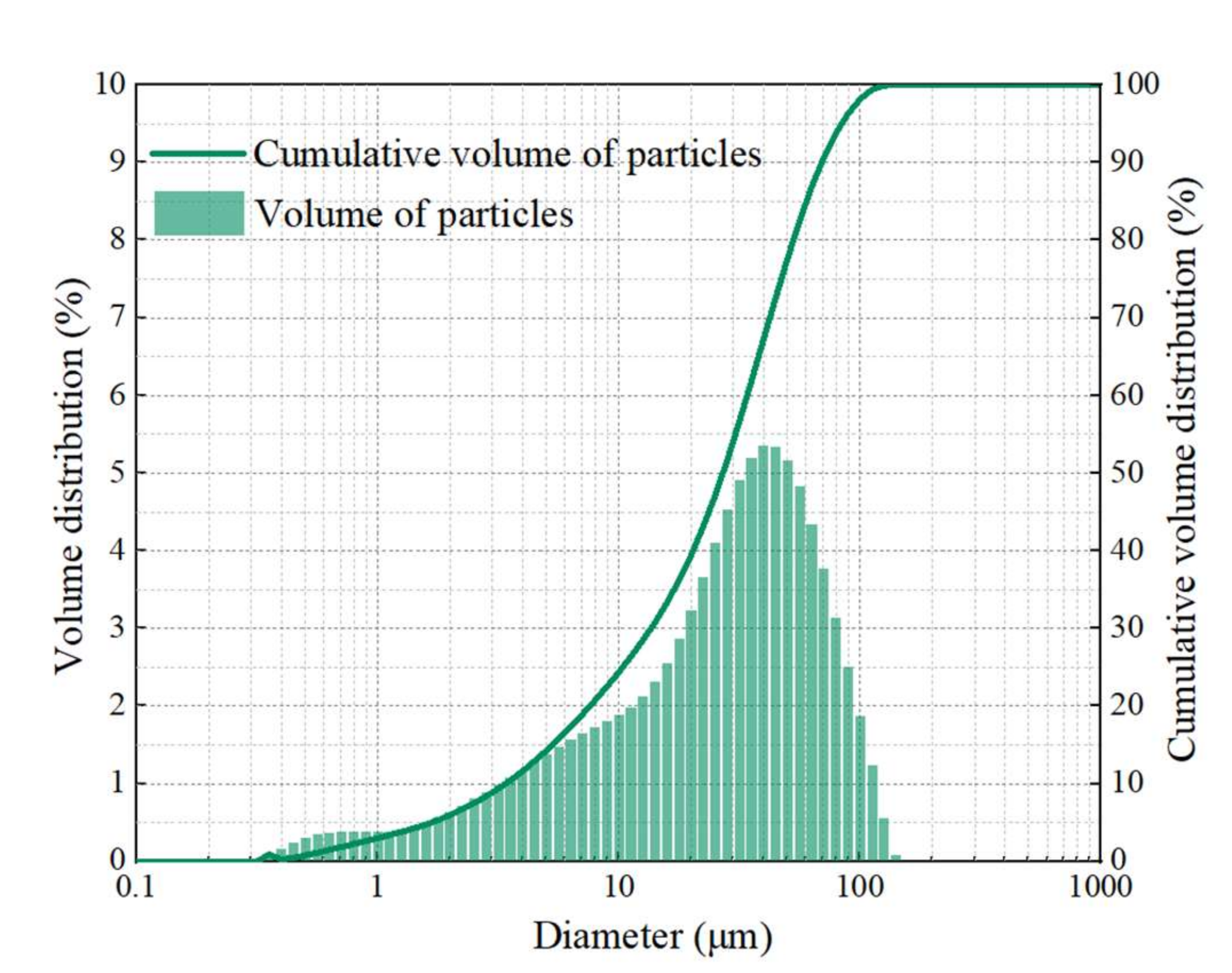
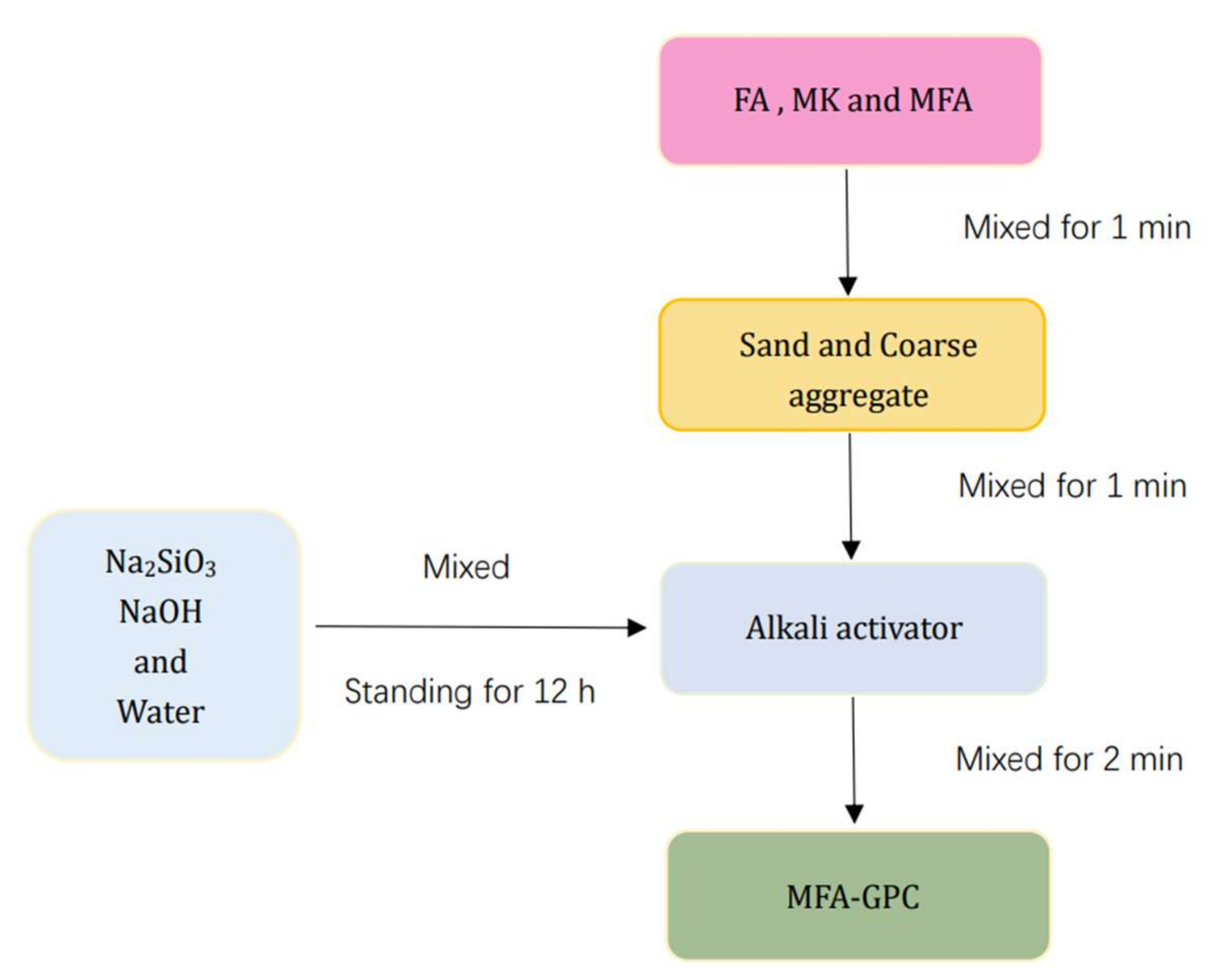
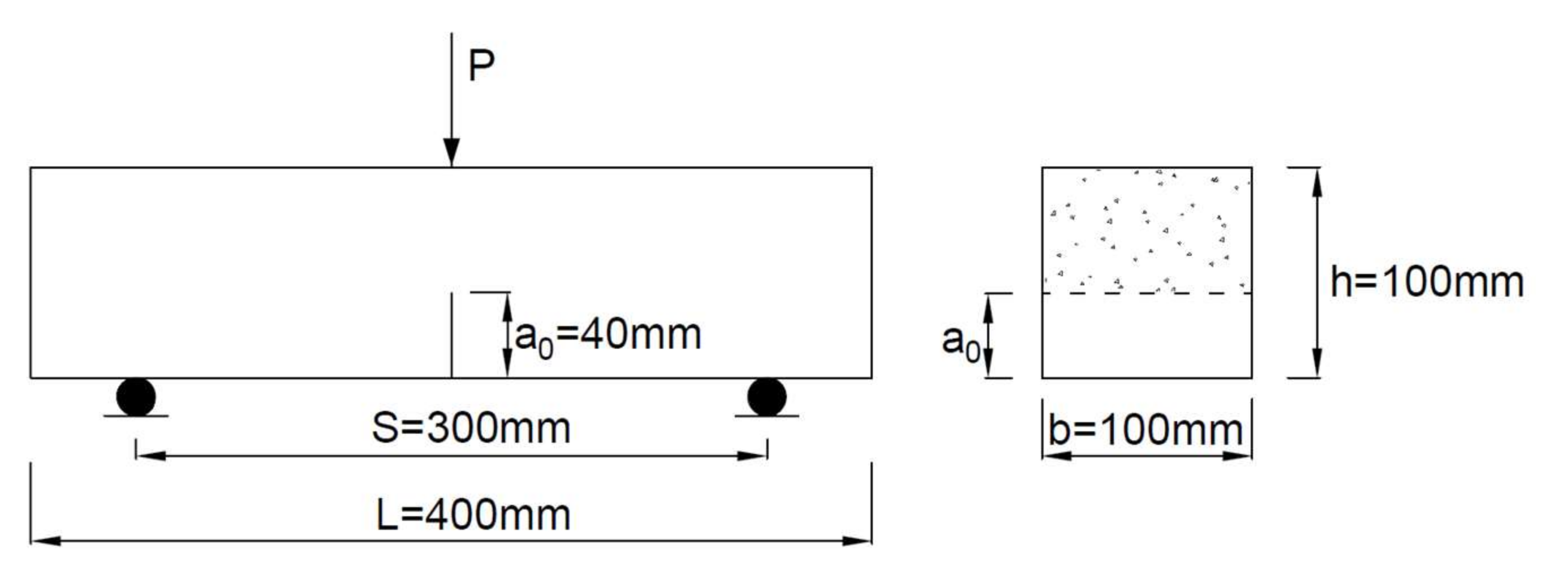
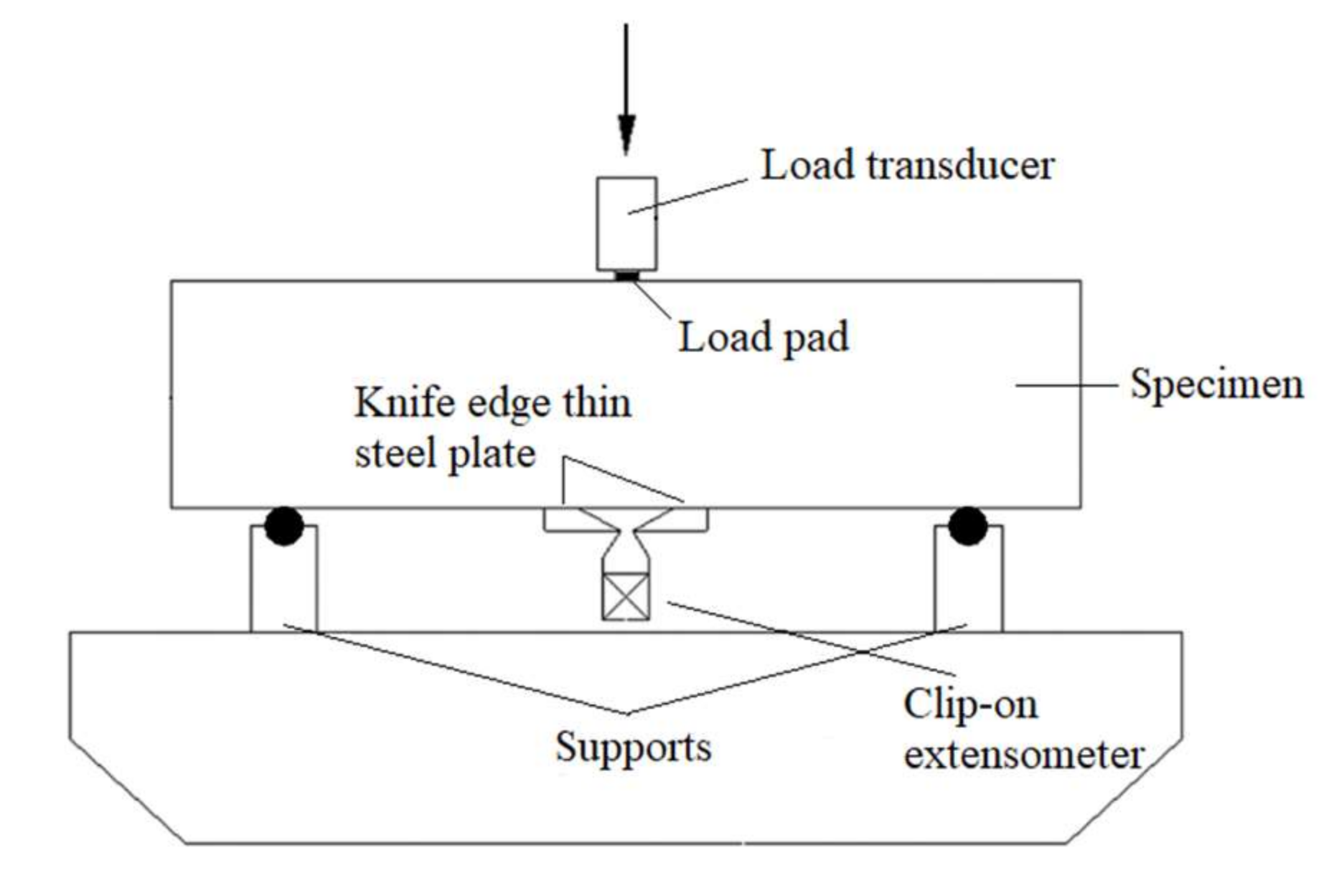
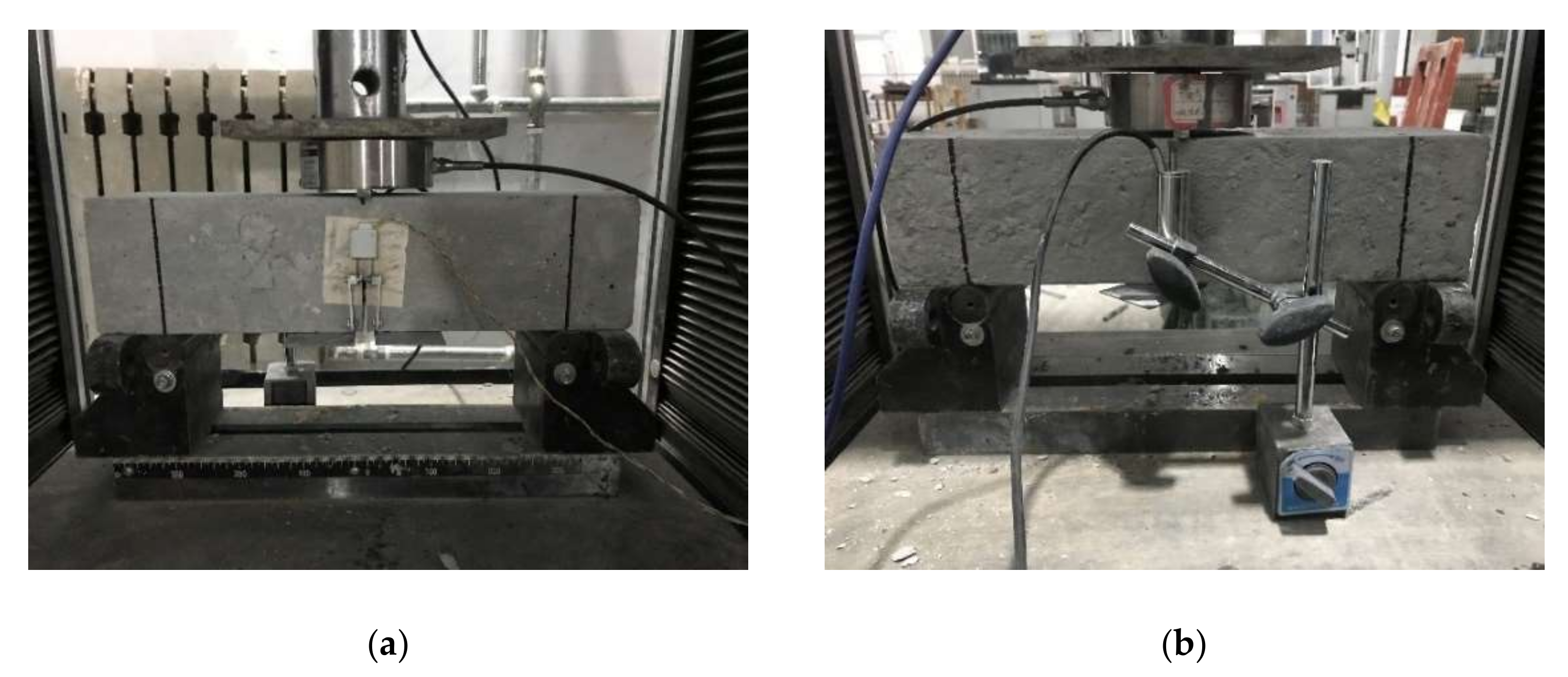
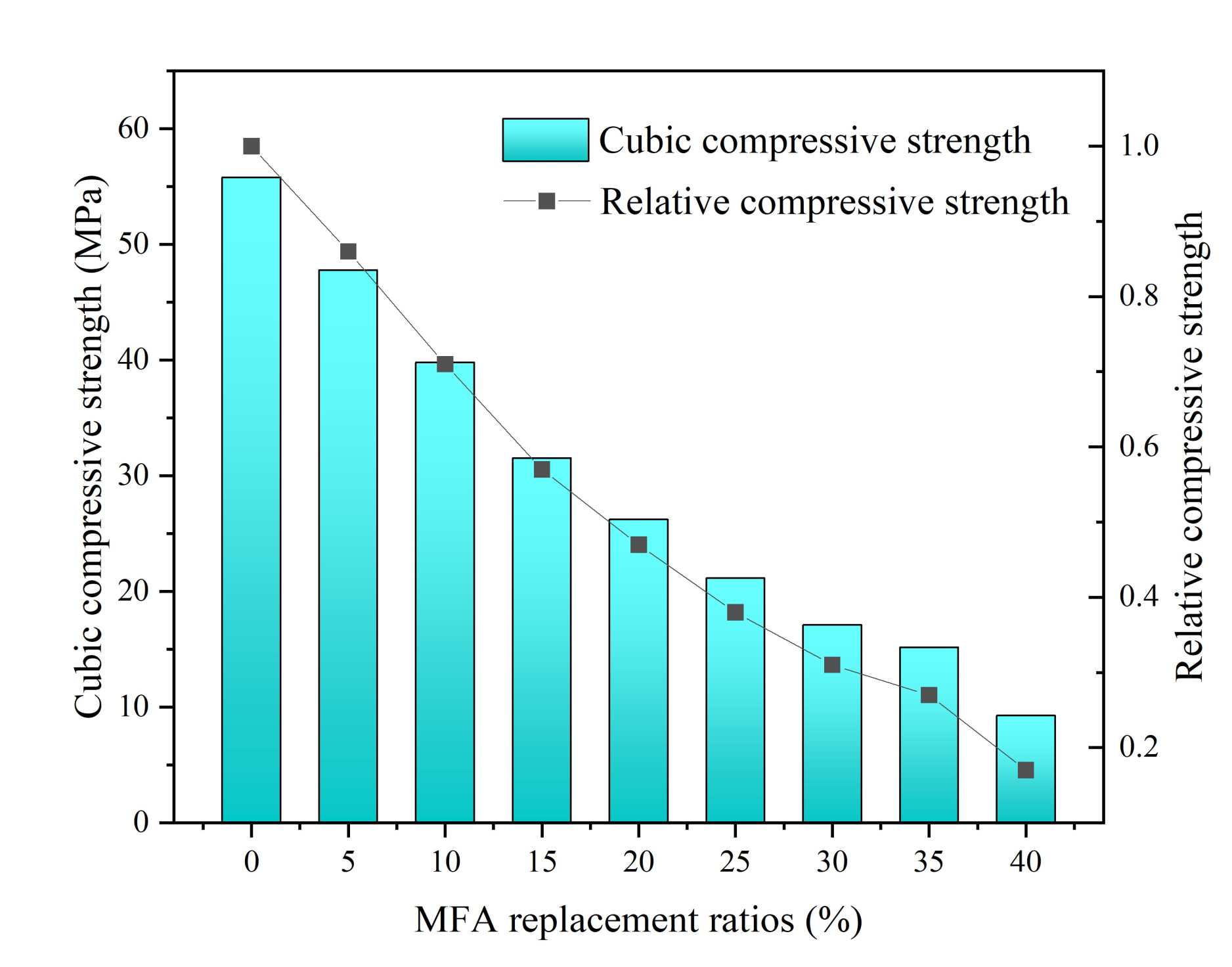

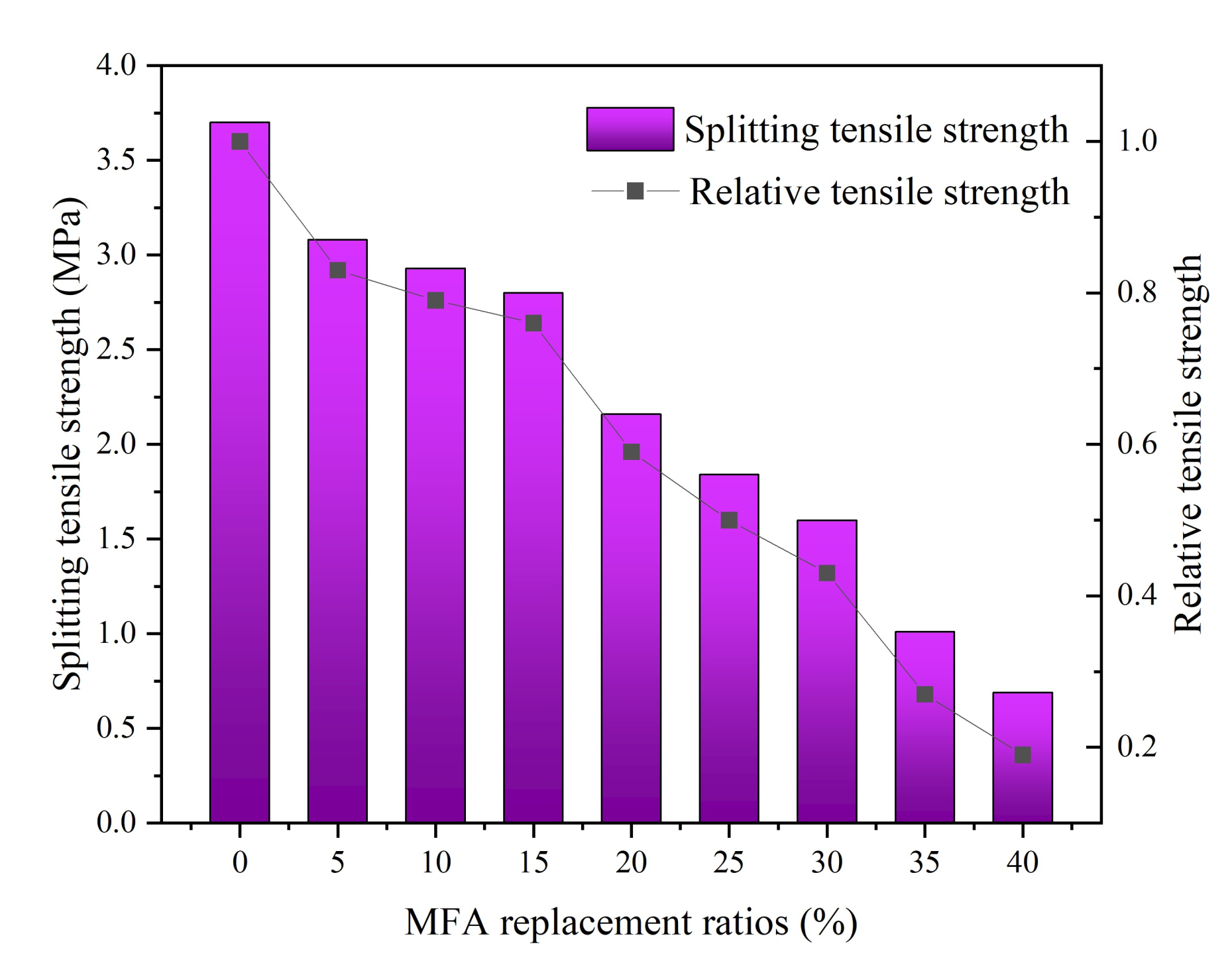
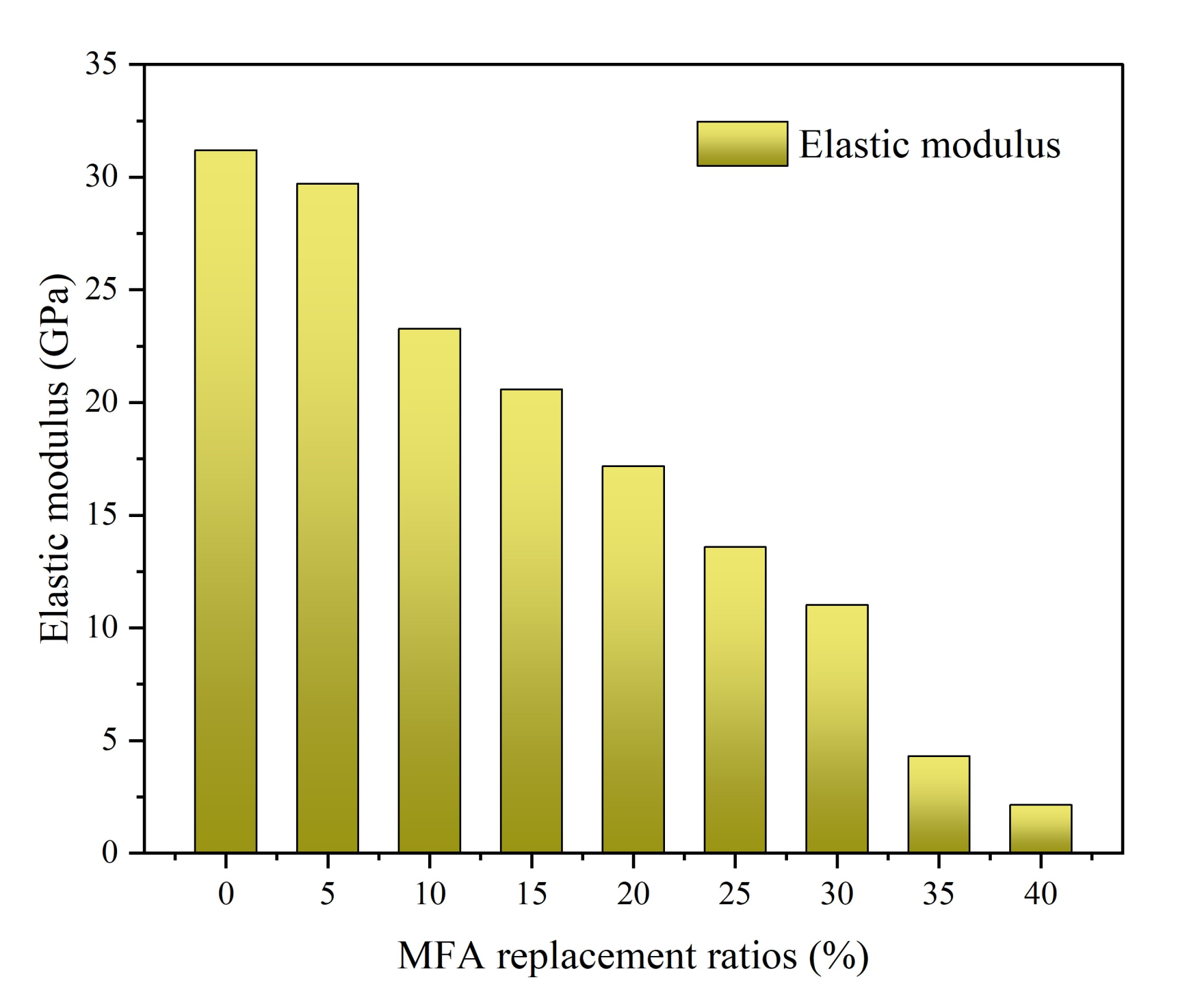
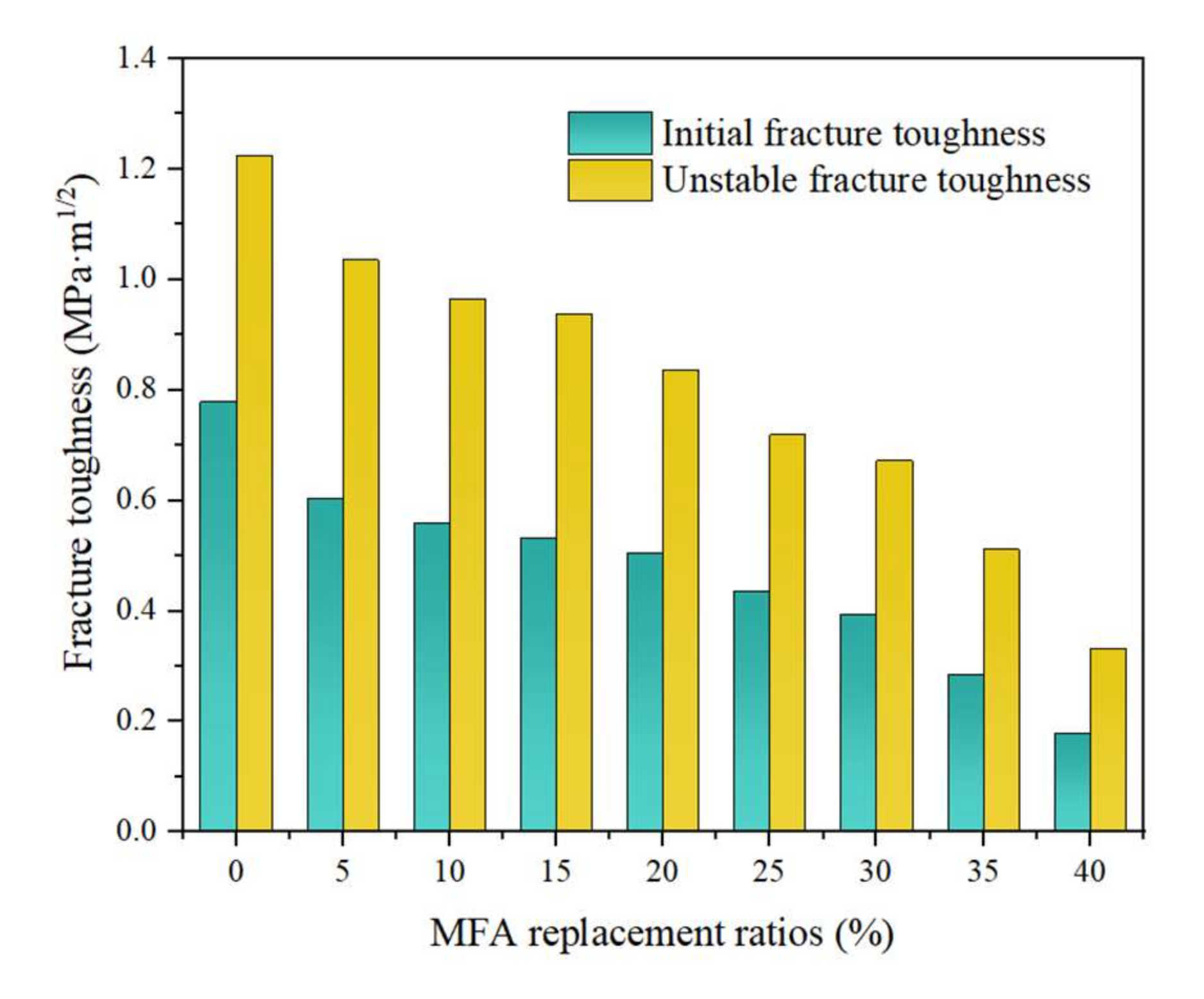



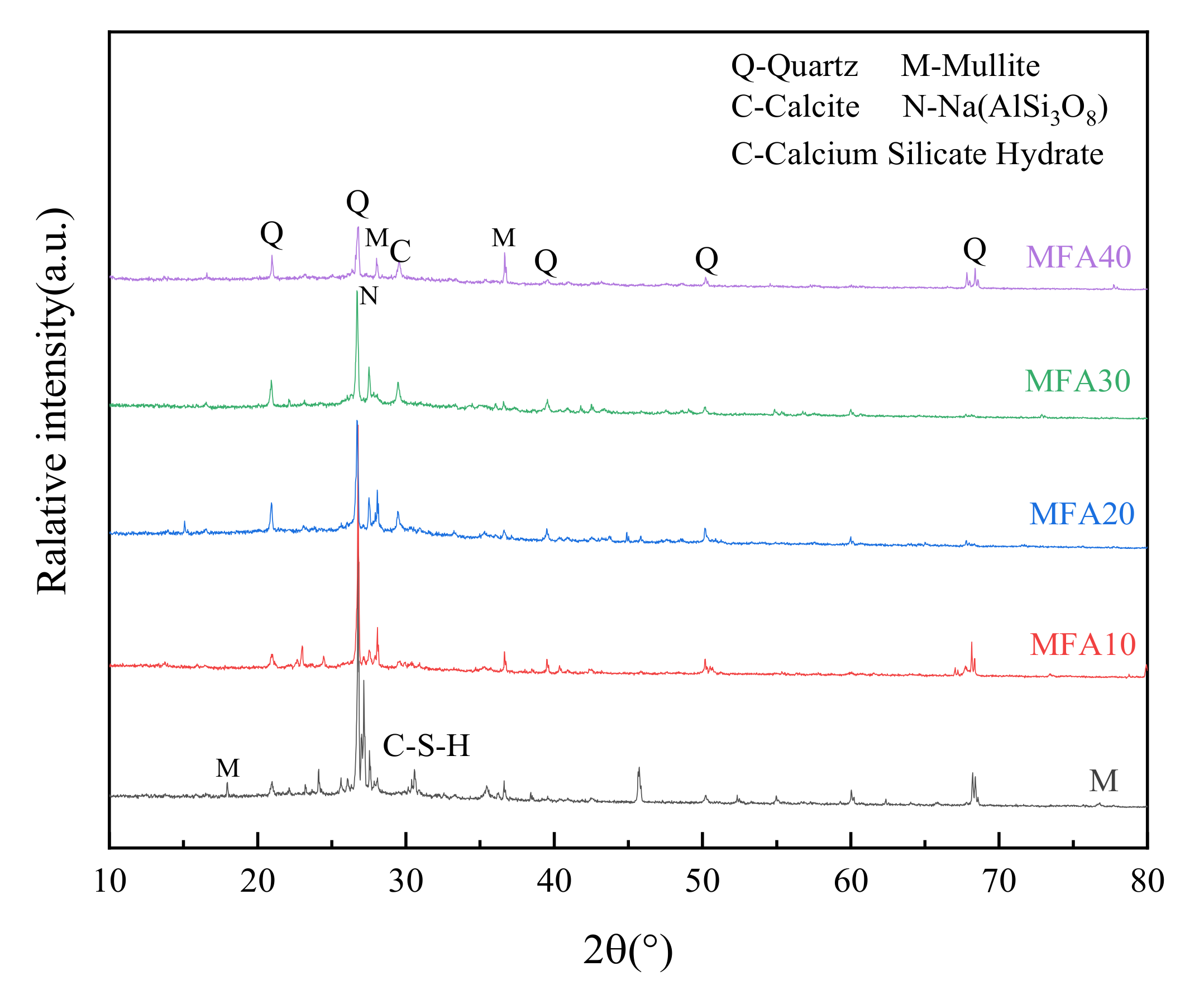
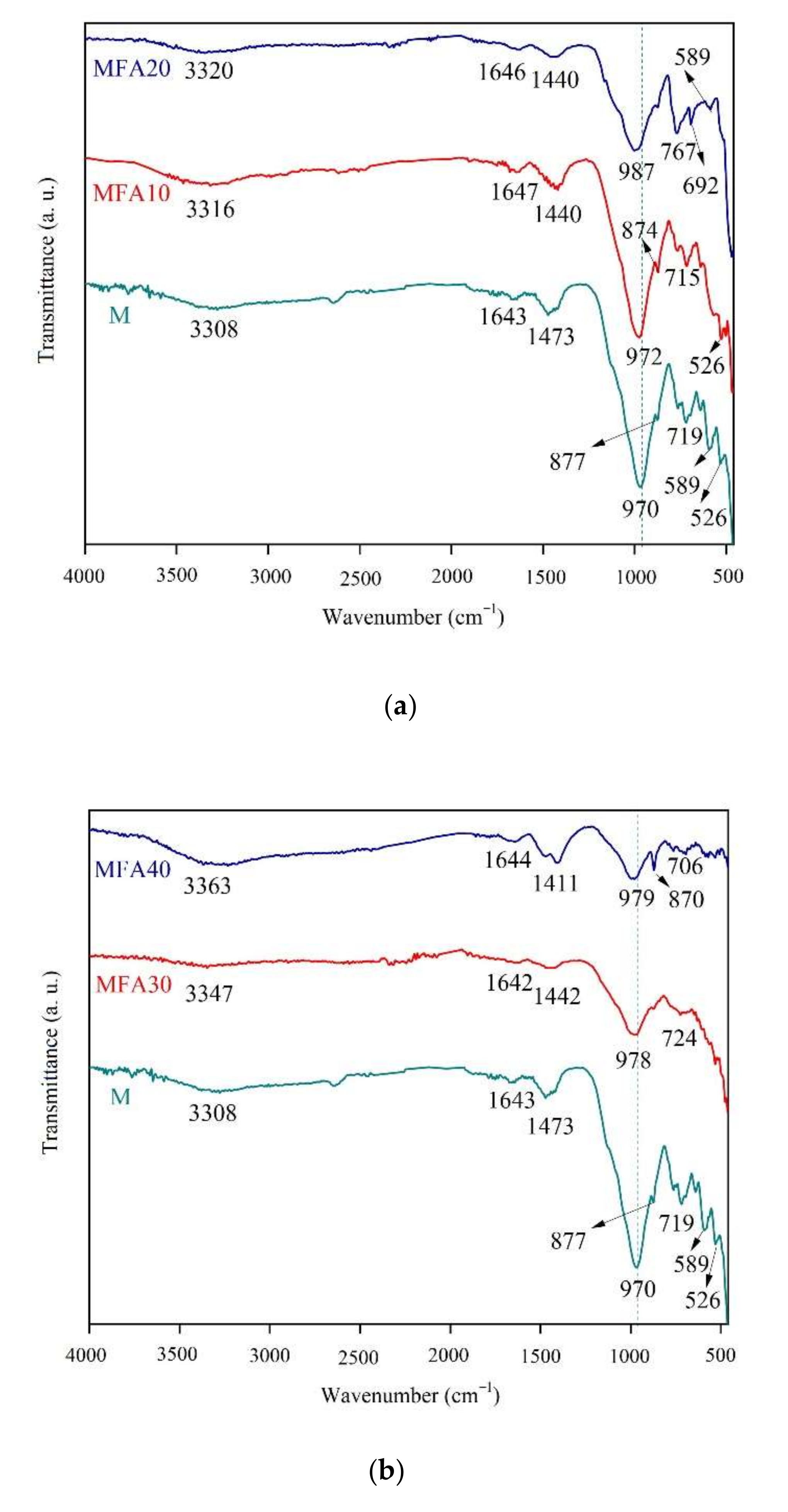
| Chemical Compositions (wt.%) | CaO | Cl | Na2O | K2O | SO3 | SiO2 | MgO | Al2O3 | P2O5 | Fe2O3 |
|---|---|---|---|---|---|---|---|---|---|---|
| MK | 35.87 | 24.50 | 15.37 | 9.42 | 8.19 | 3.19 | 1.71 | 0.72 | 0.52 | 0.34 |
| Chemical Compositions (wt.%) | SiO2 | Al2O3 | Fe2O3 | CaO + MgO | K2O + Na2O | SO3 |
|---|---|---|---|---|---|---|
| FA | 60.98 | 24.47 | 6.70 | 5.58 | – | 0.27 |
| MK | 54 | 43 | ≤1.3 | ≤0.8 | ≤0.7 | – |
| Mix ID | FA | MK | MFA | Alkali Activator | River Sand | Coarse Aggregate | Water-Reducing Agent |
|---|---|---|---|---|---|---|---|
| kg/m3 | kg/m3 | % | kg/m3 | kg/m3 | kg/m3 | % | |
| M | 234.9 | 234.9 | 0 | 371.7 | 577 | 1072 | 3.0 |
| MFA5 | 234.9 | 211.4 | 5 | 371.7 | 577 | 1072 | 2.5 |
| MFA10 | 234.9 | 187.9 | 10 | 371.7 | 577 | 1072 | 2.0 |
| MFA15 | 234.9 | 164.4 | 15 | 371.7 | 577 | 1072 | 1.5 |
| MFA20 | 234.9 | 141.2 | 20 | 371.7 | 577 | 1072 | 1.0 |
| MFA25 | 234.9 | 117.5 | 25 | 371.7 | 577 | 1072 | 0.5 |
| MFA30 | 234.9 | 93.7 | 30 | 371.7 | 577 | 1072 | 0 |
| MFA35 | 234.9 | 70.5 | 35 | 371.7 | 577 | 1072 | 0 |
| MFA40 | 234.9 | 47.0 | 40 | 371.7 | 577 | 1072 | 0 |
| Heavy Metals | Standard A (mg/L) | Standard B (mg/L) | Standard C (mg/L) | MFA (mg/L) | MFA-GPC (mg/L) |
|---|---|---|---|---|---|
| Zn | 120 | 100 | 100 | 4.71 | 0.70 |
| Cu | 120 | 100 | 100 | 0.67 | 0.07 |
| Cr | 15 | 15 | 4.5 | 0.06 | 0.03 |
| Pb | 1.2 | 5 | 0.25 | 1.48 | 0.11 |
| Cd | 0.6 | 1 | 0.15 | 0.19 | - |
Publisher’s Note: MDPI stays neutral with regard to jurisdictional claims in published maps and institutional affiliations. |
© 2022 by the authors. Licensee MDPI, Basel, Switzerland. This article is an open access article distributed under the terms and conditions of the Creative Commons Attribution (CC BY) license (https://creativecommons.org/licenses/by/4.0/).
Share and Cite
Niu, M.; Zhang, P.; Guo, J.; Wang, J. Effect of Municipal Solid Waste Incineration Fly Ash on the Mechanical Properties and Microstructure of Geopolymer Concrete. Gels 2022, 8, 341. https://doi.org/10.3390/gels8060341
Niu M, Zhang P, Guo J, Wang J. Effect of Municipal Solid Waste Incineration Fly Ash on the Mechanical Properties and Microstructure of Geopolymer Concrete. Gels. 2022; 8(6):341. https://doi.org/10.3390/gels8060341
Chicago/Turabian StyleNiu, Mengya, Peng Zhang, Jinjun Guo, and Jia Wang. 2022. "Effect of Municipal Solid Waste Incineration Fly Ash on the Mechanical Properties and Microstructure of Geopolymer Concrete" Gels 8, no. 6: 341. https://doi.org/10.3390/gels8060341






